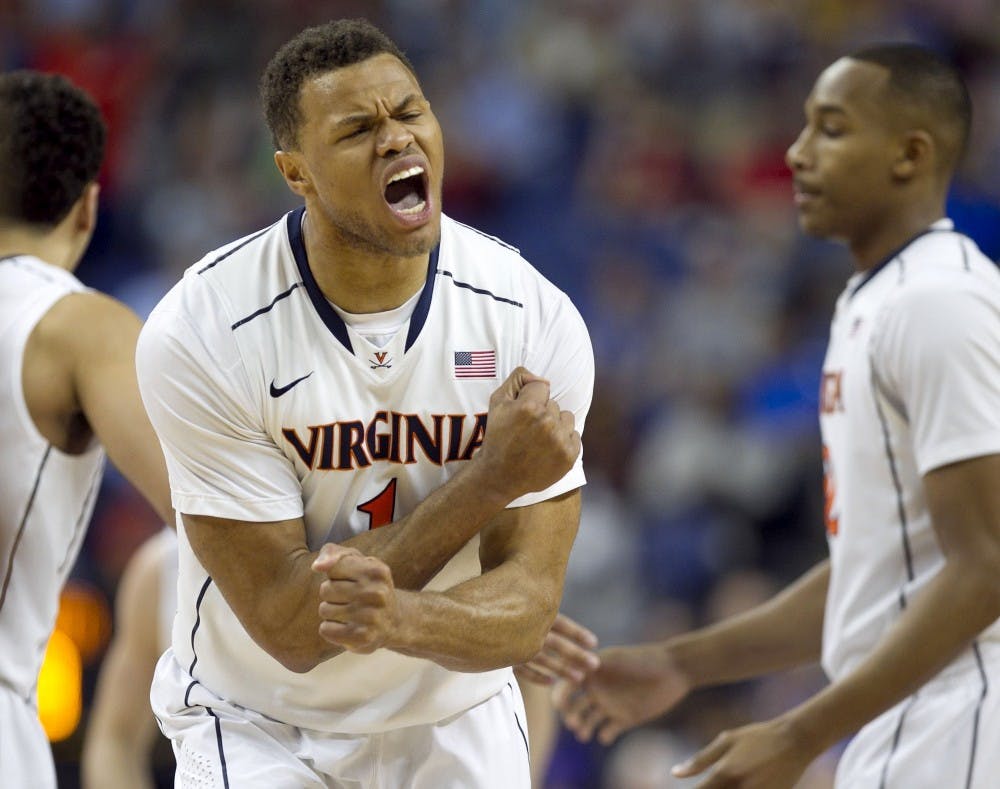This past Tuesday, No. 5 Wisconsin faced a tough road test when going up against No. 14 Maryland. The matchup was supposed to be the best game on that particular night, and it lived up to the hype.
But when my friend yelled “59-53 Maryland” after checking for the score on his phone, I asked “How much time’s left?” To my surprise, he told me that it was already over.
59-53 is an early third quarter score in the NBA, and would even be a strange score at the college level 10 years ago.
This is why many people believe that college basketball is facing a scoring crisis.
No. 2 Virginia, one of the nation’s top teams, has developed a reputation for playing an extremely slow and at times tedious brand of basketball. The Cavaliers average only 66.1 points per game, 205th in the country. What gives? How can a national championship contender rank so low in scoring?
The answer comes in pace of play. As a general trend, college basketball has become slower and slower with each passing season, but Virginia has taken this phenomenon to another level. The reigning ACC champions average only 58.3 possessions per game, the fourth fewest at the Division I level, according to Kenpom.com.
Because of this, many fans and media members have advocated for a variety of possible solutions to college basketball’s scoring and pace problem. One of the more popular ideas is a shorter shot clock. Currently, college basketball has a 35-second shot clock while the NBA uses a 24-second clock. NCAA women’s college basketball uses a 30-second shot clock as well.
At first glance, forcing teams to use a shorter shot clock would result in more possessions and shot attempts in a sport that desperately needs more scoring in order to keep its audience entertained.
According to data from KPISports.net, the amount of points per possession that a team scores is down 2.9 percent throughout college basketball compared to last year and there are 1.36 fewer field goal attempts per game.
Among other causes, many coaches believe that the defensive schemes at the college level are more sophisticated than ever before, which causes offenses to take longer. More and more teams are using zone defenses, which slows down the game.
With this being the case, how can we expect scoring to increase if there is a change to a 24-second shot clock? If teams struggle to find a rhythm on offense when given 35 seconds to shoot, an 11 second drop off would probably cause even less offensive production.
“What we’re going to have is more possessions of bad basketball,” South Carolina men’s basketball head coach Frank Martin said on the proposal.
Instead of trying to fix the scoring issue at the college level with in-game rule changes like the shot clock, the American basketball system as a whole, from the youth level all the way to the NBA, needs to take a step back and re-evaluate a few things.
For one, the AAU youth basketball culture is holding back player development. High school players that are good enough to play at the college level come onto campuses more athletic than ever and know how to score in one-on-one situations. However, a lot of them lack the basketball IQ, fundamentals and general know-how to play as a cohesive group.
Martin said he believes that the high school basketball system in America, which doesn’t play with a shot clock at all, needs one before the college game considers messing with its own.
Secondly, the one-and-done system that has been in place since the 2005-2006 season needs to be altered. More times than not, the nation’s top high school players will come and play at the college level for only one season before declaring the NBA Draft. Before this rule went into effect, players could go straight from high school to the NBA and those who were actually committed to playing in college would normally stay for multiple seasons.
But when coaches are forced to build their teams around superstar players who will probably be gone one year later, it’s hard for players to build chemistry with one another.
Earlier this season, it was announced that the NIT tournament will use a 30-second shot clock.This is good news, because it allows for experimentation, and maybe what college basketball needs is a compromise between a 24-second and 35-second shot clock.
Nonetheless, to truly fix its scoring issue, college basketball needs to find a way to improve the level of competition at the youth level and find some sort of way to keep its star players in school for more than one year.

